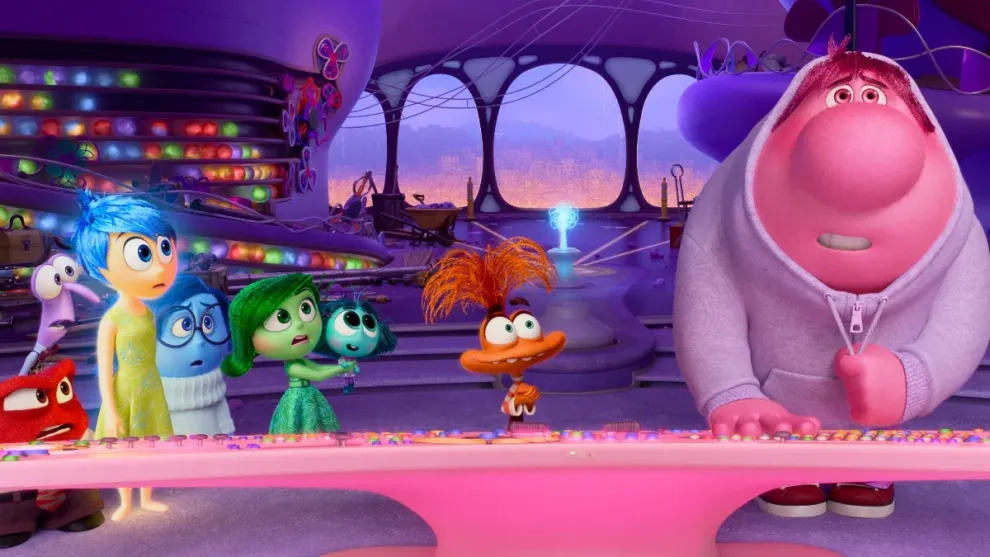
Could Pixar be growing up? The idea seems odd; from the moment Woody and Buzz debated flying versus “falling with style,” the animation laureate has exhibited a fully formed sensibility—a rich blend of buoyant imagination and piercing insight, conveyed via painstaking computerized craft. But because Disney’s most celebrated cartoon arm remains a commercial enterprise, many of their works still center on wide-eyed children and (more directly) their anxious parents. In recent years, however, the studio has gently expanded its heroes’ ages and preoccupations, telling stories about childless adults (Soul), lovestruck twentysomethings (Elemental), awkward high schoolers (Onward), and angsty kids straddling adolescence (Luca, Turning Red). Now comes Inside Out 2, a movie about a 13-year-old grappling with the chilling prospect (perceived or actual) that her actions in the present will determine the course of her future. It might not be a coming-of-age story in all respects—the notion of sexual attraction stays safely outside its youthful boundaries—but it’s not for nothing that it features a literal alarm blaring the arrival of one of life’s most horrifying rites of passage: puberty.
Creatively speaking, Inside Out 2 attempts to accomplish a similar sort of maturation, expanding the original’s vibrantly detailed universe and complicating its themes. At the same time, it suffers from a certain, inevitable stasis. The first Inside Out, which landed on this critic’s list of the best movies of the 2010s, was remarkable above all for its conceptual innovation—its vision of emotions as anthropomorphized beings that guide our thoughts and behavior while collaborating and bickering in the fashion of a workplace sitcom. Inside Out 2, by virtue of being a sequel, can’t hope to replicate that sense of unprecedented wonder. Instead, it builds upon its predecessor with intelligence and variety, even as it traffics in a degree of repetition that is slightly dispiriting.
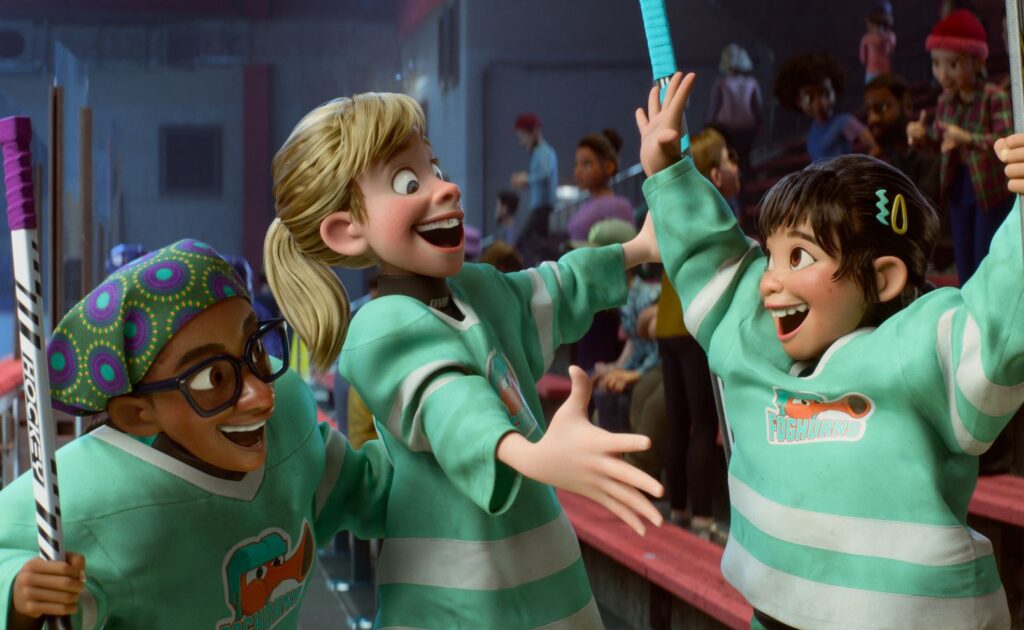
It’s unfair to characterize Inside Out 2 as the same as Inside Out only more so, but its narrative construction is undeniably comparable. Once again, young Riley (voiced by Kensington Tallman) finds herself facing an inflection point—here, attending an end-of-summer hockey camp that doubles as a tryout for the varsity squad. Once again, Joy (Amy Poehler)—the blue-haired, yellow-bodied pixie who operates as a benevolent micro-manager inside Riley’s mind—finds herself locked in a power struggle with a rival emotion who threatens her pristine supremacy. Once again, Joy gets unceremoniously booted from the “headquarters” in Riley’s brain and into the deeper recesses of her mind, occasioning a dual story wherein she must navigate the treacherous terrain of Riley’s subconscious while the remaining occupants attempt to direct Riley’s actions (with predictably catastrophic results). And once again, mistakes will be made, obstacles will be overcome, and lessons will be learned.
It’s a sequel, you might say, what exactly were you expecting? Maybe a little more ingenuity, a little less familiarity. But one of the many ideas bouncing around this thought-provoking movie is that demanding perfection is unhealthy. And once you accept Inside Out 2 on its own terms—once you recognize that it’s a noble follow-up rather than an original masterpiece—you will discover that it’s a brisk and delightful adventure, one which is by turns funny, exciting, clever, and (yes) profoundly emotional.
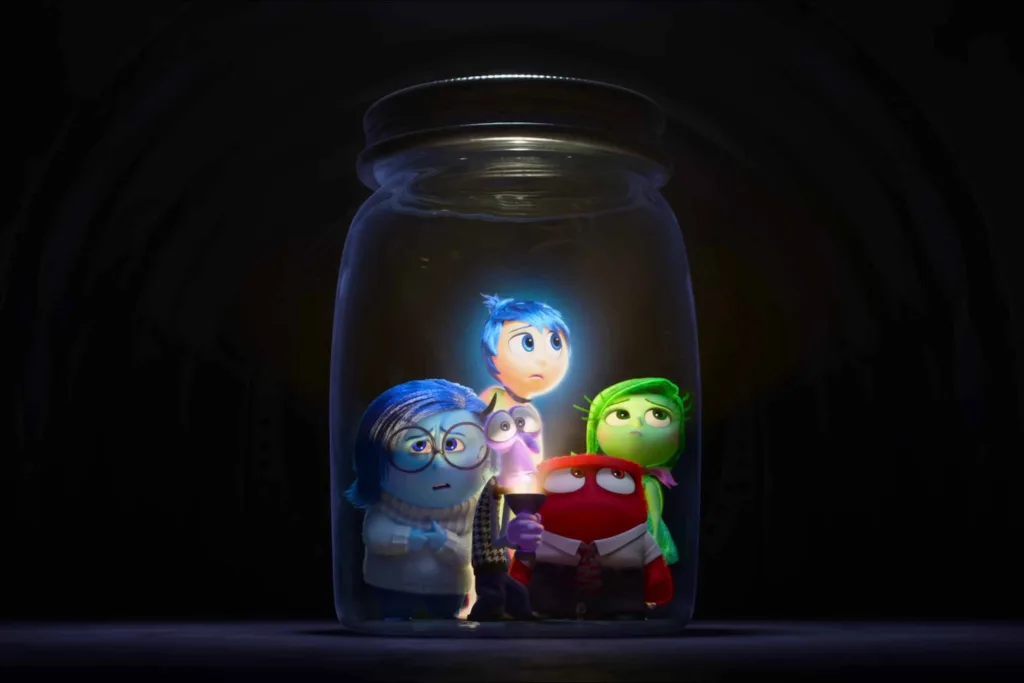
Directed by Kelsey Mann from a screenplay by Meg LeFauve and Dave Holstein, Inside Out 2 obeys the law of the sequel by roughly doubling its number of primary characters. A somewhat stale introduction (akin to a “Previously on” TV recap) reminds us of the colorful returning players beyond Joy: red-faced Anger (Lewis Black), true-blue Sadness (Phyllis Smith), green-skinned Disgust (Liza Lapira, replacing Mindy Kaling following a salary dispute), and purplish Fear (Tony Hale, doing the same for Bill Hader). In the two years since the formative events of Inside Out, this quintet has developed a steady equilibrium—one which that aforementioned puberty alert promptly shatters as Riley’s hormones start raging; in a cute touch, even the gentlest press of a button on the “emotion console” causes her to shriek in rage, anguish, or self-loathing. (Another sly gesture: the unremarked-upon emergence of a pimple on her chin.) Still, our fab five work well together: When Riley learns on her way to camp that her two closest friends will be attending a different high school come fall, Joy waits until she exits the car before allowing Sadness to take control, affording Riley a surreptitious, cathartic cry.
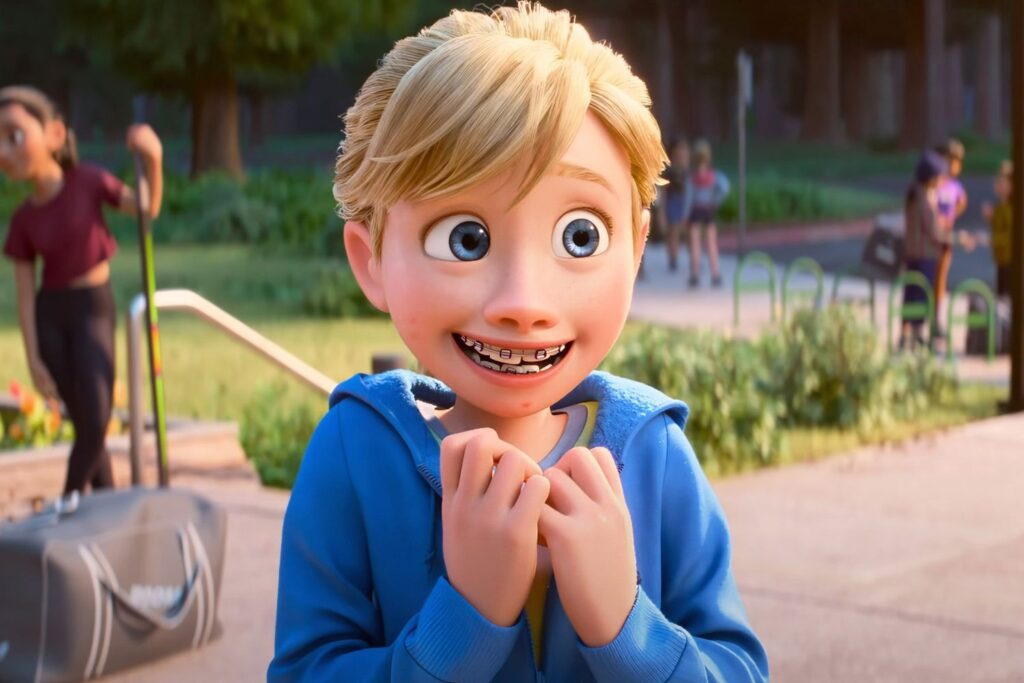
It’s a tidy moment, but Inside Out 2 understands that adolescence is a decidedly unstable time. And so, new emotions suddenly burst onto the scene, complexifying Riley’s subconscious and bringing tinted hues to her brightly colored internal workforce. These conscripts, whom Joy naturally views with horror and suspicion, include Envy (Ayo Edebiri), a teal flibbertigibbet whose constant veneration verges on worship; Embarrassment (Paul Walter Hauser), a soft-spoken hulk prone to hiding his blushing pink face under his sweatshirt; and Ennui (Adèle Exarchopoulos), a blasé, too-cool-for-school lavender figure who spends most of her time staring at her phone. (In a hilarious touch, an elderly woman voiced by June Squibb briefly totters into view, only to be admonished, “Nostalgia, you’re not supposed to be here for another 10 years.”) These three sentiments are invisibly subordinate to the movie’s most significant new character: Anxiety (Maya Hawke), a bundle of nervous energy whose vivacious appearance—orange skin, frizzy hair, a wide mouth housing severely gapped teeth—both underlines her bubbly freneticism and camouflages her crippling insecurity.
The dramatic engine fueling Inside Out 2 is the ensuing conflict between Anxiety and Joy, both of whom come to believe that the other represents an existential threat to Riley’s well-being. In one sense, they’re temperamental opposites: Whereas Joy likes to bask in sunny-side-up contentment, Anxiety’s inherent pessimism compels her to guard against potential failure. (Fear’s immediate reaction upon learning that Anxiety has compiled a database of every possible disaster that might befall Riley: “OK, you and I are going to be friends.”) But they both behave with a level of self-righteousness—a certitude that their methodology is the only way forward—that borders on mania. Anxiety is essentially a cracked-mirror version of Joy, refracting her obsessive quest for happiness into a state of perpetual panic.
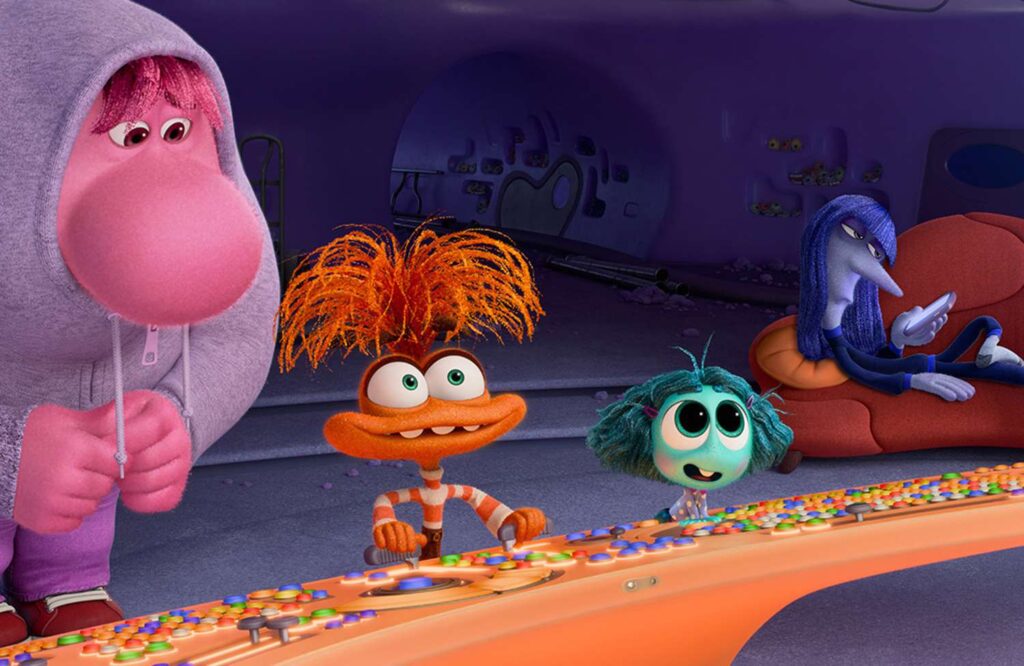
If the chief insight of Inside Out was that agony and ecstasy are equally crucial to a child’s growth—that the seemingly useless Sadness was in fact just as valuable a contributor to Riley’s welfare as the effervescent Joy—the plot of Inside Out 2 posits the disturbing suggestion that both are too primitive for the intricacy of teendom. At least, that’s Anxiety’s stance; convinced that our original heroes are ill-equipped to usher Riley into the next phase of her development, she stages a coup d’état, literally bottling up Joy and her brethren and shunting them into Riley’s unconscious while assuming command of day-to-day operations. She even resolves to demolish Riley’s existing “sense of self”—an elegant, sapphire crystalline structure that embodies her quiet confidence—and replace it with a more jagged, amber configuration that prioritizes angst over poise.
The sequences in which Anxiety manipulates Riley, trying desperately to elevate her social status and prevent her from being ostracized, are excruciating in their anthropological accuracy. With its vivid colors and boisterous environments, Inside Out 2 will surely appeal to children, but the scenes where Riley adopts an attitude of faux disenchantment—abandoning her friends in favor of the more popular crowd, pretending to dislike her favorite boy band—will resonate deeply not just with parents, but with all reformed ex-teenagers. Anxiety is a terrifying villain in part for how well-meaning she is—how she speaks to our universal desire to be liked and fit in, and how that craving can warp our entire personality.
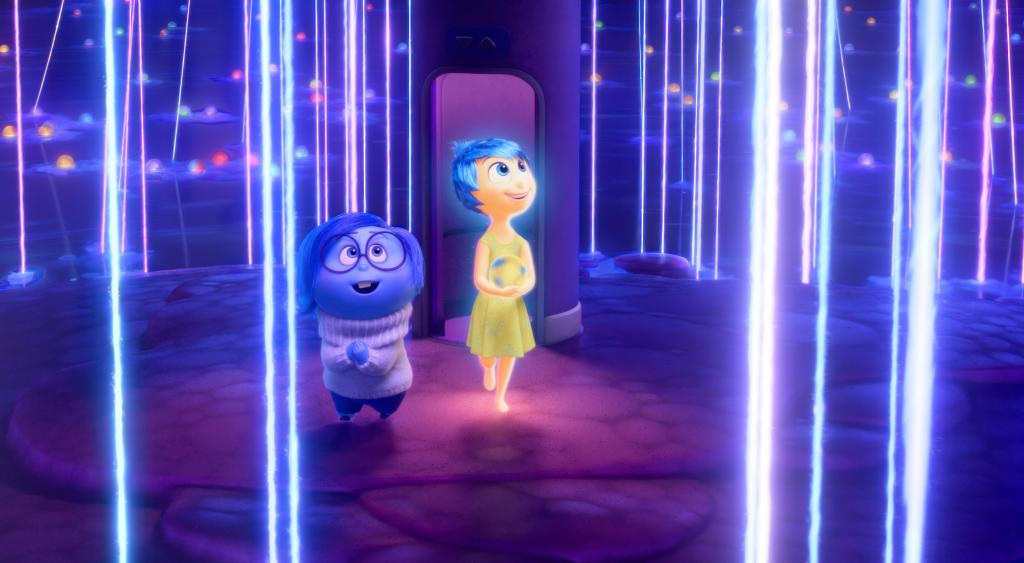
Lest this makes the movie sound like a philosophical bummer, remember that Inside Out 2 is still a Pixar picture—a product of lively animation, playful humor, and opulent invention. Joy & Co.’s arduous journey to return to headquarters is, more than anything else, an opportunity for the filmmakers to deliver some truly excellent dad jokes. By which I mean: Riley’s stream of consciousness takes the form of a raging river, her casting about for an idea produces a thunderous “brain storm,” and—my personal favorite—her sudden penchant for irony instigates an avalanche resulting in a yawning abyss dubbed a “sar-chasm.” (Even better: Shout across such a gulf, and your earnest request gets tonally distorted into a blithe acerbity. Who comes up with this stuff?) Beyond that, the characters’ visits to various locations—a “memory vault” that shelters a once-cherished dorky videogame warrior and a self-described “deep dark secret”; a wasteland where negative reminiscences have been banished—are independently enjoyable, even as they further contribute to the film’s conceptual vastness. All of this is exquisitely rendered, with fluid camerawork, finely textured design, and of course eye-catching color.
If Inside Out was unadulterated in its execution—dazzling, triumphant, overpowering—it’s fitting that Inside Out 2’s success feels more modulated, mingling sensations of satisfaction, admiration, and curiosity. This movie recognizes that our identities are shaped by all of our experiences, good and bad—a notion that it visualizes via an especially therapeutic group hug. Yet it also makes room for moments of unvarnished purity, as during a lovely sequence when Riley calls out to Joy, gold flecks pulling her toward the console like a tractor beam of wonder. Once again, Pixar has wormed its way inside our heads: pushing our buttons, activating our pleasure and pain sensors, and above all, making us feel.
Grade: B+
Jeremy Beck is the editor-in-chief of MovieManifesto. He watches more movies and television than he probably should.
